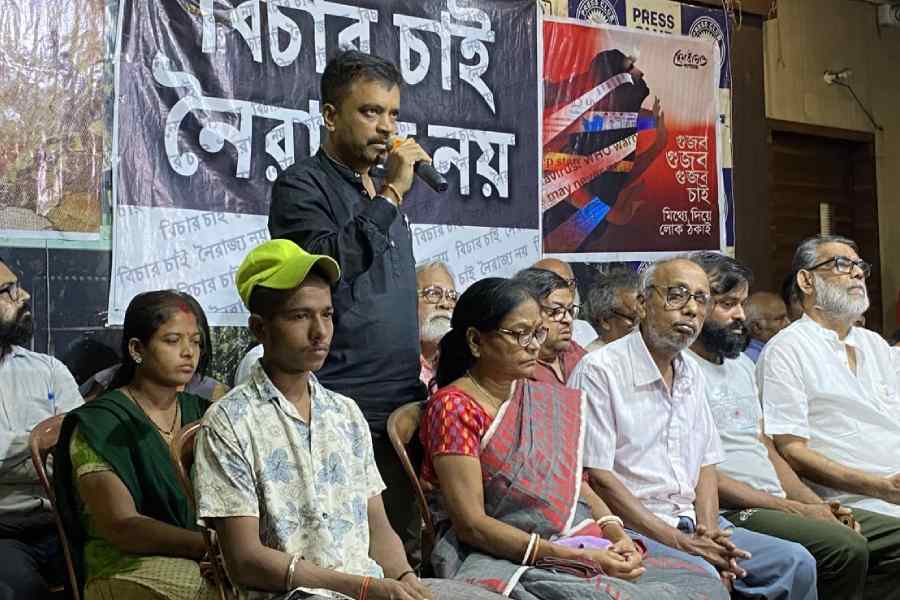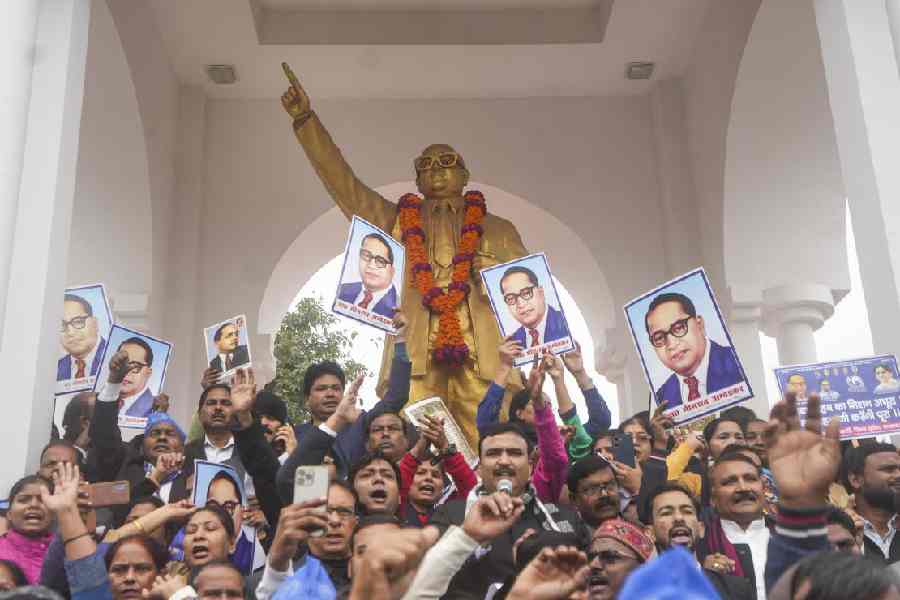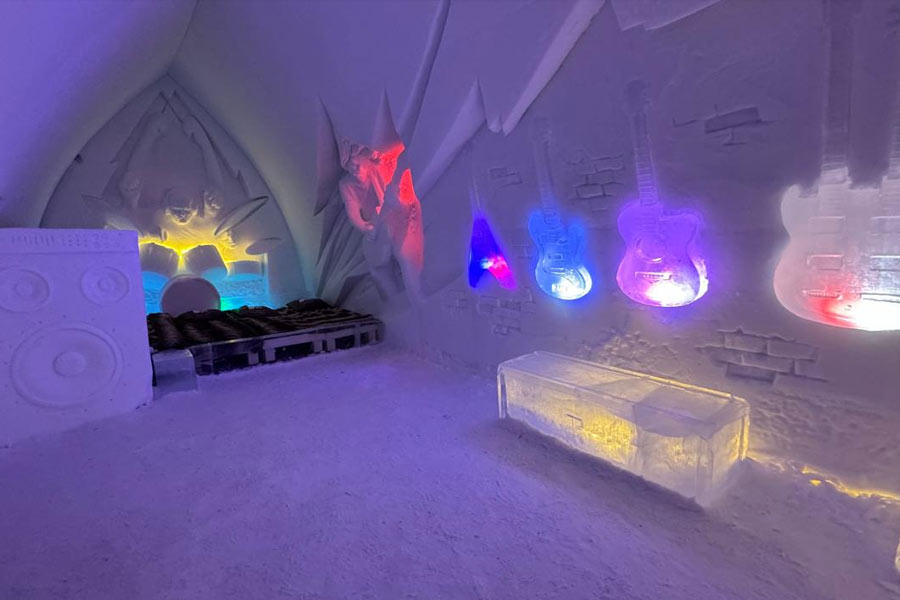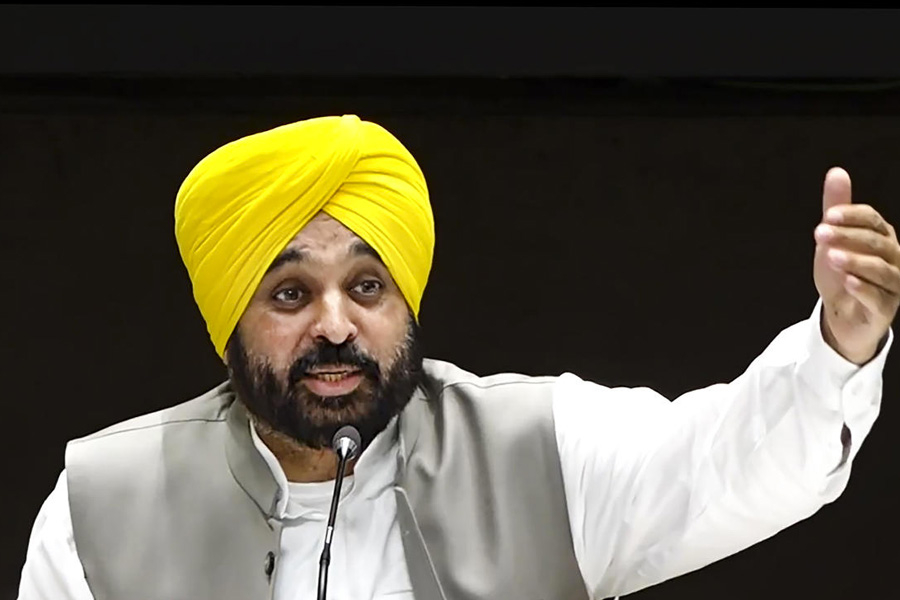Hooghly resident Swapan Deb, 62, wept while describing on Friday how his 33-year-old son Rajib died at SSKM Hospital on September 5 “for the lack of catheterisation”.
A worker at a hosiery factory in Rishra, 25km from Calcutta, Swapan said a doctor had told him immediately after his son’s death that Rajib, who underwent a kidney transplant about a decade ago, would probably have lived had a urinary catheter been inserted in time.
Swapan and his wife Sima were among six families brought before the media by a civil society group, Desh Bachao Ganamancha, whose members include Trinamool leaders and which had in the past organised several programmes in support of the state government.
While the state government claims that 29 patients died because of the junior doctors’ cease-work, a forum of senior government doctors has questioned the figure and suggested that “the real cause” of the deaths is the state’s deficient healthcare infrastructure.
During the news conference at the Kolkata Press Club, all six families said they had lost loved ones because of the “absence of doctors” from government-run medical facilities.
“I could not find a doctor who could insert a catheter into my son’s urethra. After his death, a senior doctor at the hospital told me that my son would have survived had the catheter been inserted in time,” Swapan said.
Sima, who had donated a kidney to Rajib in 2014, sat next to her husband. She said she could not believe that her son had died because of “the failure to insert a catheter” in the same hospital where he had undergone a critical procedure like a kidney transplant a decade ago.
Swapan and Sima were not qualified to explain the reason behind their son’s death. However, many poor patients — whose economic condition forces them to visit government teaching hospitals for the treatment of major illnesses — have spoken of their sufferings since the junior doctors began their now 36-day-old cease-work.
Ganamancha members — who include former Trinamool MP Dola Sen and former party minister Purnendu Basu — said they had contacted 27 families that had lost loved ones “to the junior doctors’ strike”.
“We could bring representatives of only six families here as the others live in remote areas,” Basu said. He added that the group had got the details of the families from the government.
Rajib’s maternal uncle Rupak Chowdhury, who regularly visited his nephew at SSKM, said the young man had been admitted on August 2 “for a minor surgery on a boil on his upper body”.
“Several (kidney-related) complications cropped up after the surgery. Though he received the necessary attention initially, the situation changed after the junior doctors announced the cease-work,” Chowdhury said.
At a time when the junior doctors and the government are locked in a tussle over a demand for justice for the August 9 victim, a debate has broken out on the impact of the medics’ cease-work on the state’s healthcare delivery system.
Chief minister Mamata Banerjee had during a televised address on Thursday claimed that 27 patients had died and around 7 lakh been deprived of treatment during the junior doctors’ cease-work.
On Friday, she revised the death toll to 29 and used her social media handle to announce an ex gratia of Rs 2 lakh for each family that had lost a member “to the doctors’ protest”.
Some doctors contested the state government narrative. A statement from the Service Doctors’ Forum, an organisation of senior state government doctors, said the junior doctors were not responsible for the 29 deaths, as claimed by the chief minister.
“The chief minister has announced a compensation of two lakh rupees to the family members of the patients who died because of the junior doctors’ strike. On behalf of the Service Doctors’ Forum, we believe that these deaths were not caused by the junior doctors’ strike,” the statement, issued by Forum member Dr Swapan Biswas, said.
“Even after the junior doctors went on strike, senior doctors worked tirelessly to maintain the healthcare system. This (the state government narrative) has tarnished the efforts of the senior doctors, which, we believe, should have been honoured instead.”
The Forum expressed doubts over the accuracy of the claim about 29 deaths, adding that “even deaths in ambulances” were being attributed to the junior doctors’ strike.
“We believe that the real cause of these deaths is the shortage of infrastructure, including beds, doctors, and healthcare workers, at government hospitals in proportion to the population,” the statement said.
At the news conference, the families of the dead patients demanded a thorough investigation into the deaths.











